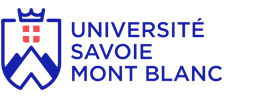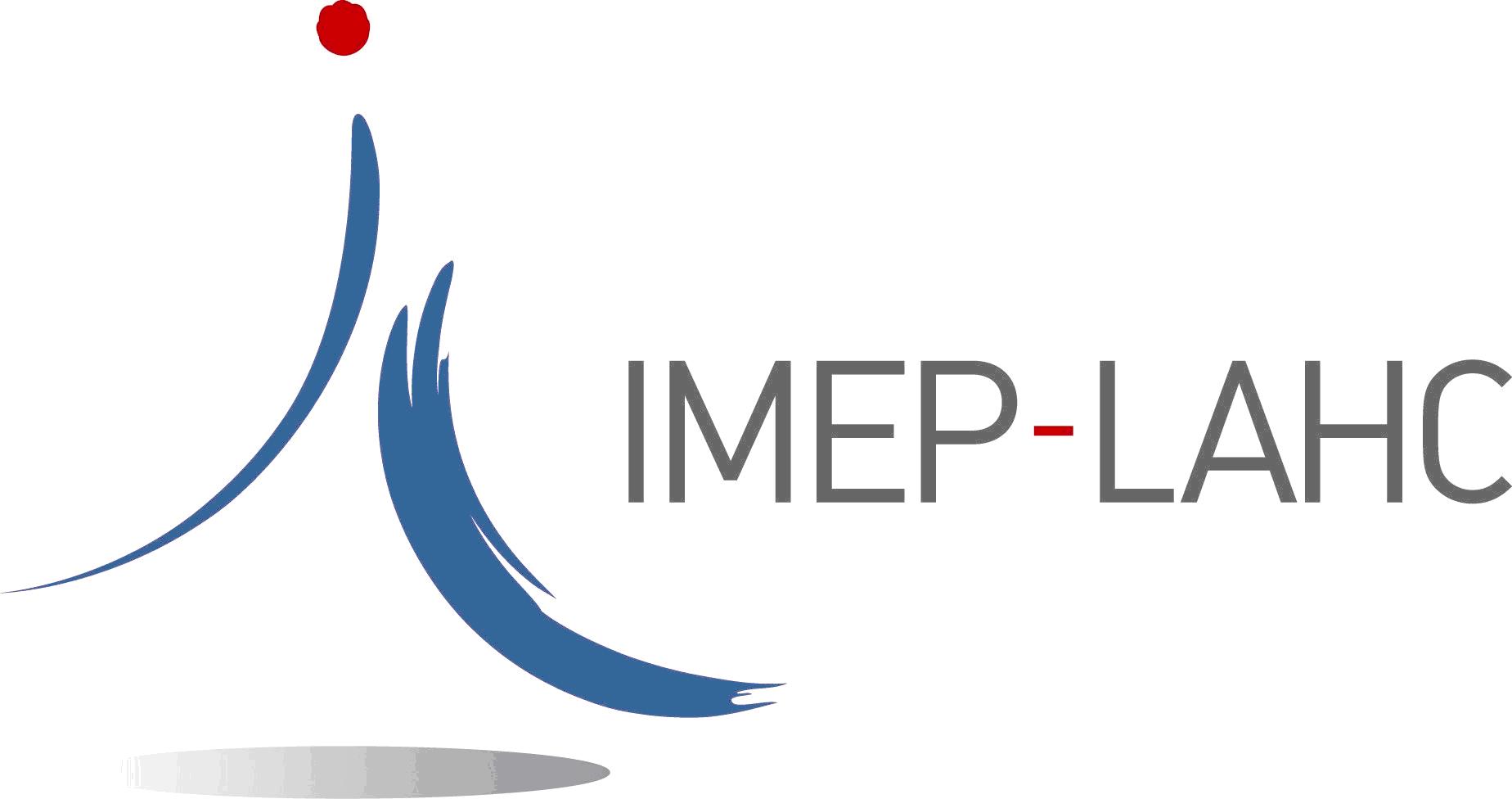Développement de méthodes de caractérisation de matériaux et de modélisation de milieux complexes dans le domaine Térahertz (THz)
Publié le : 14 avril 2023
Sujet de thèse 2023-2024
Développement de méthodes de caractérisation de matériaux et de modélisation de milieux complexes dans le domaine Térahertz (THz)
1- Context and scientific issues
The terahertz (THz) domain is very promising for the detection of substances and materials [1], for security purposes [2], for non-destructive testing [3] but also for very high speed telecommunications (5 and 6G).
Thus, in these applications, as for example and more precisely for the construction of very high speed telecommunication systems involving frequencies in the millimeter range and above, it is necessary to have a perfect knowledge of the media in which the waves propagate and with which they are brought to interact.
Many materials have already been characterized and their characteristics (refractive index, absorption or otherwise considered dielectric permittivity) are now known on the spectral band of interest which typically ranges between 100 GHz and several THz. For example, common dielectric materials (paper, fabrics,
plastics…) are transparent to these waves [4].
However, the materials constituting the transmission channel are very often far from ideal, they can contain a variable moisture rate and they are mostly heterogeneous in composition and/or structure: mixtures of different materials, possibly structured (multilayered, porous, more or less rough), etc. It is therefore
necessary to take this complex structure into account this complex structure in the methods used to characterize them as well as in the model to predict their behavior. In fine, in fine, these studies will lead to the modeling of the entire transmission channel in order to optimize its performance, limits…
The objectives of the project are therefore:
- to develop characterization methods specifically adapted to the complex materials of interest,
- to characterize these materials under different temperature and humidity conditions and over a wide spectral range from sub-THz to several THz,
- to propose theoretical models of these heterogeneous materials (scattering models [5], effective medium models [6], diffraction models [7]…),
In addition, always with the aim of developing new methods of characterization, it will be necessary to implement an experiment of type optical pump – THz probe to study the dynamic and/or nonlinear properties [11] of certain materials which can be used to manufacture devices of emission and detection of THz wave, or of shaping of THz beams.
The IMEP-LAHC laboratory is internationally recognized for its activities in the field of THz characterization of materials and devices developed since the 1990s [8-10]. The project will rely on the THz characterization facilities of the PLATERA platform of the IMEP-LAHC laboratory and on its competences in terms of development of characterization methods for materials and devices. More precisely, the Platera platform has the following systems: 2 THz-TDS spectrometers (Time Domain Spectroscopy) and imaging systems, 1 CW (Continuous Waves) spectrometer, 1 multispectral « video rate » imaging system based
on an electronic multiplication chain (82 GHz- 1. 1 THz) associated with a THz camera, a THz optical pump- probe experiment using an amplified femtosecond laser and an OPA (Optical Parametric Amplifier) allowing to tune the wavelength of the optical pump beam between 280 nm and 2μm [11].
2- Goals and methods
The objective is to characterize the « optical » properties of samples heterogeneous in composition and structure, i.e. made of materials of different natures that can be mixtures, laminar structures, porous, more or less rough etc. …. The extraction of the properties of these complex materials (absorbing, scattering,
dispersive) which constitute the environment of the transmission channel require the development of adapted measurement protocols, the modeling of coupled phenomena (absorption, diffusion etc…) and the deployment of a numerical solution allowing to obtain the properties of materials of the mixture from the
measurements.
We will also be interested in the effects of humidity, especially for porous materials found in buildings such as construction materials and thermal and sound insulation (gypsum boards, wood boards – OSB, glass wool, wood wool etc.).
Beyond the materials constituting the transmission channel, it will also be necessary to characterize certain materials constituting the transmitters and receivers or certain passive components used in a transmission system such as lenses, filters etc…
The thesis work will therefore include 6 main tasks:
– Task 1: Sub-THz and THz characterization benches
In the context of the study, it is necessary to acquire an atmospheric chamber allowing to control the humidity rate on an important range (0% -> 90%) and if necessary, the temperature of the sample. It will be necessary to install/construct this chamber on the basis of already operational experiments (TDS
Spectrometers).
– Task 2: Effective media – mixtures
For materials composed of mixtures whose constituent elements or inclusions exhibit dimensions much smaller than the considered wavelength, it will be necessary to validate the possibility of using effective media models. For hydrophilic or porous materials, elements such as water and air will have to be
systematically taken into account.
– Task 3: Diffusing media
As soon as the aggregates or inclusions are sufficiently large compared to the wavelengths, the use of scattering models will be necessary to predict the behavior of materials, particularly in terms of losses. Thus,
it will be necessary to validate the type of scattering phenomena (Mie, Rayleigh…) involved and this the most
appropriate model.
– Task 4: Diffractive media
Sometimes, structured materials possibly periodically may be encountered (fabrics for example [7]), we had to verify the occurrence of diffraction phenomena and for the simplest structures (1D) to verify the validity of « standard » models, or if needed to use numerical methods (Finite Elements) for 2D/3D structures.
– Task 5: Study in real conditions
In addition, and transversally to the previous tasks, it will be necessary to study the effects of humidity andeven temperature on the behavior of materials of interest. In particular, the humidity rate should a priori be one of the most important parameters; the materials will thus be studied over a wide range of humidity rates from a few % to more than 90%.
– Task 6: Characterization of dynamic and non-linear properties of materials
In addition, still with the aim of developing new methods of characterization, we propose to implement an experiment of the type optical pump – THz probe [11] which will make it possible to characterize the dynamic effects in certain semiconductor or nonlinear materials possibly usable in devices of emission and detectionor shaping of the THz beams.
3- References
[1] R. Miles, X.-C. Zhang, H. Eisele, A. Krotkus, « Terahertz Frequency Detection and Identification of Materials and Objects », NATO Science for Peace and Security Series B: Physics and Biophysics, Springer Nature (2021)
[2] A.U. Sokolnikov, « THz Identification for Defense and Security Purposes », World Scientific (2013
[3] D. Nüßler, J. Jonuscheit, « Terahertz based non-destructive testing (NDT) – Making the invisible visible », Oldenbourg Wissenschaftsverlag April 7 (2020) – DOI 10.1515/teme-2019-0100
[4] E. Hérault, F. Garet, J.-L. Coutaz, “On the possibility of identifying substances by remote active THz spectroscopy”, IEEE Transactions on Terahertz Science and Technology, 6, 1, 12-19 (january 2016)
[5] F. Garet, M. Hofman, J. Meilhan, F. Simoens, J.-L. Coutaz, “Evidence of Mie scattering at terahertz frequencies inpowder materials”, App. Phys. Lett., 105 (3), 031106 (2014) – doi: 10.1063/1.4890732.
[6] M. Scheller, S. Wietzke, C. Jansen, and M. Koch, ‘Modelling heterogeneous dielectric mixtures in the terahertz regime: a quasi-static effective medium theory’, J. Phys. Appl. Phys., vol. 42, no. 6, 2009
[7] Emilie Hérault, Maxence Hofman, F. Garet and Jean-Louis Coutaz, “Observation of terahertz beam diffraction byfabrics”, Opt. Lett., 38, 15, (sept. 2013) – 10.1063/1.4821627.
[8] L. Duvillaret, F. Garet, J.L. Coutaz, « A Reliable method for extraction of Material Parameters in THz Time-DomainSpectroscopy », IEEE JSTQE, 2, pp. 739-746 (1996) – citations 1000.
[9] M. Bernier, F. Garet, J.-L. Coutaz, H. Minamide, A. Sato, “Accurate Characterization of Resonant Samples in theTerahertz Regime Through a Technique Combining Time-Domain Spectroscopy and Kramers–Kronig Analysis”, IEEETransactions on Terahertz Science and Technology, Volume: 6, Issue: 3, May 2016
[10] Coutaz J. –L. Garet F., and V. P. Wallace, « Principles of Terahertz Time-domain Spectroscopy ». Ed. Pan Stanford Publishing, (décembre 2018) – ISBN 9789814774567
[11] D. Zhai, E. Hérault, F. Garet, J.-L. Coutaz, Ci-Ling Pan “THz generation in GaSe crystals pumped with laser photonenergy below and around the bandgap“, Appl. Phys. Lett. 122, 011103 (2023); https://doi.org/10.1063/5.0128292
3- Candidates requirements
– Education level: Master or equivalent degree in electrical or material engineering or physics.
– Expertise: Microwave engineering, Physics of semiconductors, Numerical modeling (HFSS), Instrumentation
are appreciated.
Language: English, French (not required).
4- Other information
– PhD. duration: 36 months.
– Gross Salary: 2200 € /month (up to 2400 € including teaching possibility up to 64h/year)
– Benefits: French social security system, funding for conferences, access to the laboratory and its large instrumentation hardware resources (https://www.platera.tech/)
Location: IMEP-LAHC Laboratory, University Savoie Mont-Blanc, Rue Lac de la Thuiles, 73370 Le Bourget du
Lac
Contact: Frederic GARET – garet@univ-smb.fr



 Contactez-nous
Contactez-nous Plan d’accès
Plan d’accès











